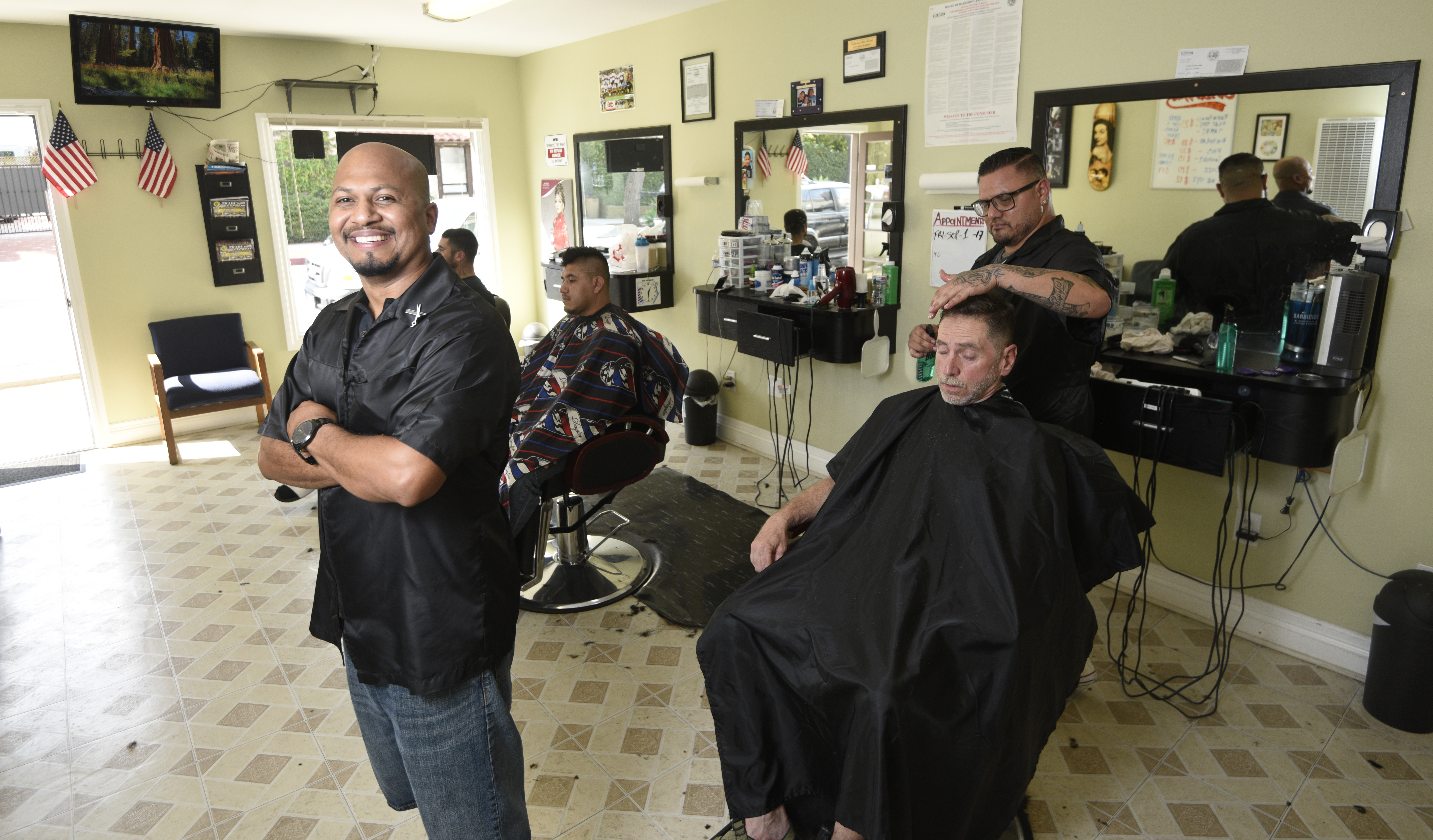Shortly after Santa Barbara County recorded its highest number of COVID-19 hospitalizations, state public health authorities announced Tuesday that they are now allowing barbershops to reopen for business — so long as they do so outdoors. The same is true for nail salons and massage therapists. It is not true, by contrast, for tattoo artists, piercing parlors, or electrolysis services. All of these businesses fall within the state’s regulatory rubric for “personal-services businesses.”
When Gavin Newsom imposed new prohibitions last week in response to California’s spike in COVID cases, he did so with the caveat that many of the restricted businesses would be allowed to operate outdoors, but not inside. However, that was not the case for personal-services enterprises. This most recent order tweaks that to now allow some, but not all, personal services to operate outdoors. For barbershops and hair salons, it remains to be seen just how much leeway the new language actually allows. How many barbershops, for example, will be able to move their barber chairs outdoors?
Get the top stories in your inbox by signing up for our daily newsletter, Indy Today.
Tuesday’s announcement arrived amid Santa Barbara County’s latest mixed bag of COVID news. As of July 20, the number of daily new cases in the county was heading down — to 85 — and the number of total active cases had dropped to 274 from more than 400 a couple of days prior. Even so, the number of COVID patients in hospitals throughout the county shot up to 82, the highest number ever. Of those, 31 were at Cottage, and for Cottage, that was the highest ever. Of the 82, 25 were in intensive care unit beds, just below the county’s high of 29.
While the number of new COVID cases tends to trend upward, it does so in erratic fashion, and it’s not unusual to see wide fluctuations from day to day. More than the number of new cases in isolation, public health administrators are more concerned about the capacity of local hospitals to handle a surge in cases. While all hospitals in the county fall comfortably within the state’s capacity thresholds, it’s worth noting that the inventory of surge beds on hand are now 66 percent occupied, and ICU beds are 58 percent occupied. It goes without saying that COVID patients occupy only a fraction of the total capacity. Other illnesses and conditions require hospital bedtime.
In the meantime, elected officials with the City and County of Santa Barbara remain deluged with calls and communications demanding greater enforcement of mandatory mask requirements imposed by Governor Newsom — not to mention local authorities — some weeks ago. To date, law enforcement agencies have balked at the notion of sworn deputies — armed with guns, Tasers, and bulletproof vests — handing out citations to individuals for not wearing masks.
Gregg Hart, chair of the county Board of Supervisors and point person among elected officials for the county’s COVID response, has argued against deploying enforcement against people walking the State Street promenade, for example, without masks. The real problem giving rise to the increase in COVID numbers, he’s insisted, is invisible: family get-togethers and backyard barbecues, not to mention the congested housing conditions for farmworkers in the Santa Maria Valley. To issue fines and citations to people on State Street, he has argued, will not solve the problem.
Such arguments have had little sway, however, with the large numbers of people calling Santa Barbara City Hall, demanding greater enforcement action. Those numbers have now achieved sufficient mass that Mayor Cathy Murillo has agreed to place the issue on next week’s council agenda. At issue is whether any fines should be assessed against non-compliers and, if so, who would be the appropriate personnel to issue citations: parking enforcement officers, cops, or the State Street Ambassadors.
Now is a particularly inauspicious time to attempt to enlist city police into this enforcement effort. City Hall is currently attempting to negotiate a cut in pay for city police — as well as all city workers — after having just granted the Police Officers Association (POA) a significant pay increase earlier in the year. In addition, many officers are bristling at calls to “defund the police” waged by supporters of Black Lives Matter in the wake of the killing of George Floyd. At a time when many are arguing that the police officers’ duties need to be pared down, it’s awkward to ask officers to now enforce the mask rules.
Meanwhile, Michael Ghizzoni, the chief legal officer for the County of Santa Barbara, acknowledged that the county’s Public Health Officer, Dr. Henning Ansorg, should be releasing some new orders clarifying just what the law requires in terms of wearing masks in public and what the exemptions are. All public health orders empower the county’s seven individual cities to enforce them as they see fit. Such orders typically do not specify how that enforcement is to take place and by which agencies.
Thus far, the Public Health Officer has tilted heavily in favor of education and has decidedly shied away from enforcement. To date, no cease-and-desist letters, for example, have been issued to offending businesses. Ghizzoni stated that such letters have not proven necessary after the businesses in question have been notified a problem exists.
At the Santa Barbara Independent, our staff is working around the clock to cover every aspect of this crisis — sorting truth from rumor. Our reporters and editors are asking the tough questions of our public health officials and spreading the word about how we can all help one another. The community needs us — now more than ever — and we need you in order to keep doing the important work we do. Support the Independent by making a direct contribution or with a subscription to Indy+.



